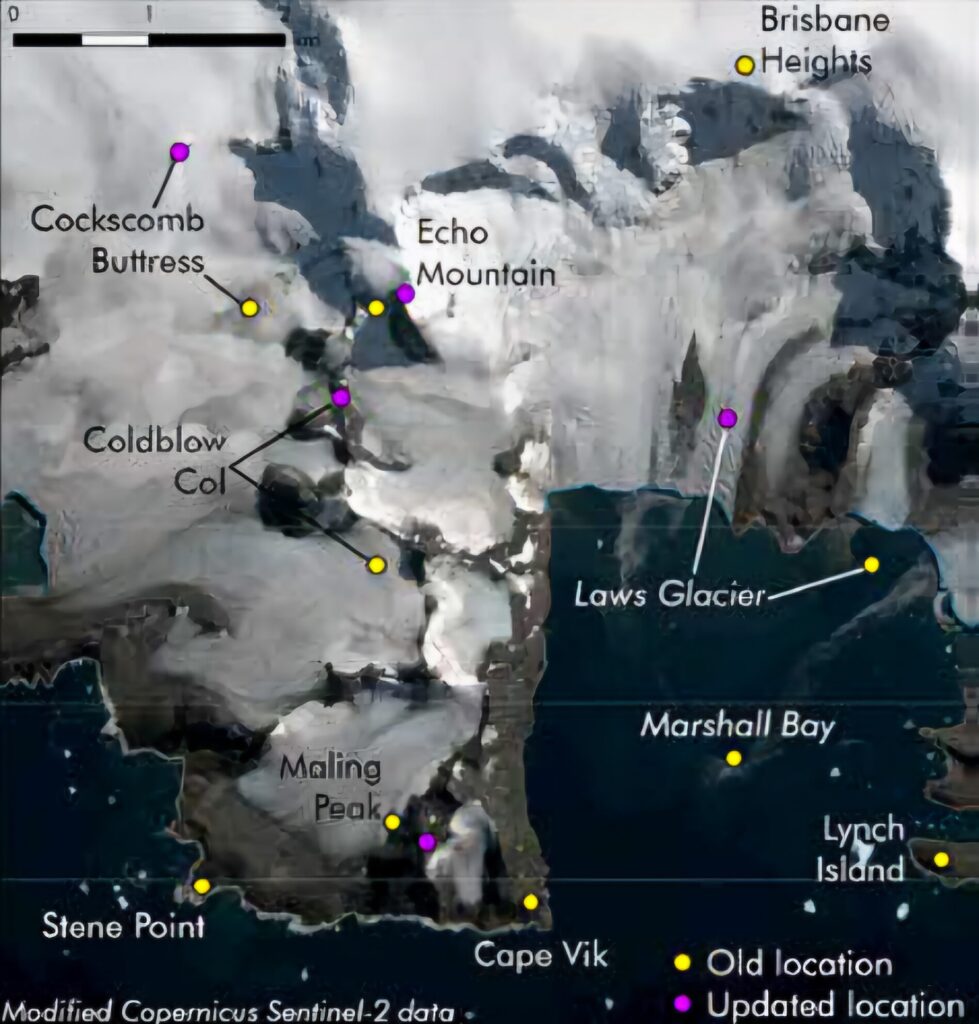As part of a regular series on the meaning of place-names in the Territory, this latest edition focuses on location accuracy.

Do place-names in Antarctica move? Many of them do if they are located on the ice sheet or ice shelves, but even certain features such as mountains and islands could be seen to be moving if you look at the history of their locations in the gazetteer. However, this is largely due to improved location accuracy over time and not actual movement.
Mapping and Geographic Information Centre (MAGIC) is producing a new map of the South Orkney Islands which has highlighted many features that plot in incorrect locations. Many places were named in the 1950s and although the mapping was ground-breaking for its time, the accuracy was low in certain areas.
It is a never-ending job to update the thousands of place-names in the British Antarctic Territory, and each time we produce a new map, we make incremental improvements to the gazetteer. These aid various strands of scientific and operational work, such as knowing exactly where a mountain peak is so that we can avoid flying too close to it or knowing where to look for breeding wildlife on small islands for example.
For information about British Antarctic Territory place-names and guidelines on how to submit new proposals, visit the Committee website.
Credit
With thanks to the British Antarctic Survey for the text.
